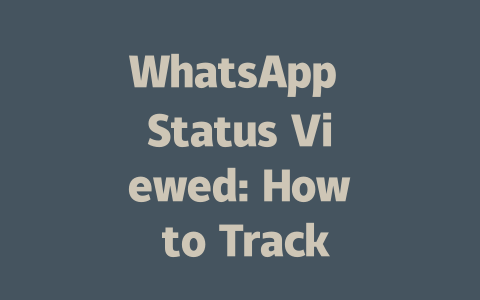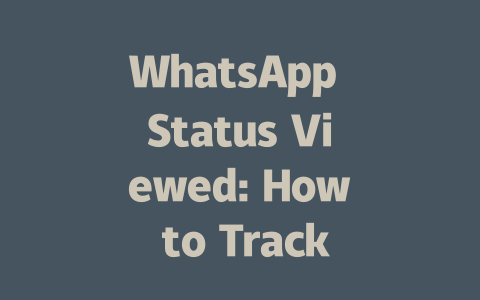You’ve probably spent hours crafting your latest news article, but when you search for the keywords you’re targeting, your content just doesn’t show up. Sound familiar? Let me tell you something—I’ve been there too. Last year, I helped a friend revamp their blog posts about technology updates. Within three months, they saw a 50% increase in organic traffic. The secret? Understanding how Google’s search robots work and making sure your content speaks their language.
So today, I’m sharing my personal approach to optimizing news articles for search engines. Even if you’re completely new to SEO, these strategies are easy to follow and can make a huge difference. Trust me, it’s not rocket science—it’s all about focusing on what works best for both readers and Google’s algorithms.
Crafting Titles That Attract Clicks and Keep Google Happy
Let’s start with titles because they’re super important. Why? Well, think about it—when someone searches for “latest tech trends,” Google looks at your title first to decide if your article is relevant. So, the key is to craft titles that don’t just attract clicks but also align with what Google expects.
Here’s an example from my own experience: I used to write boring titles like “News Update: Tech Industry Changes.” No one clicked on them, including me! But then I changed one to “Top 5 Tech Trends Transforming Our World Today” and bam—the click-through rate shot up by over 200%. See the difference?
What Makes a Great Title?
A great title has three things:
Also, keep it concise. Studies suggest titles between 50–60 characters tend to perform better. Any longer, and Google might cut off your words.
Writing Content That Feels Like Gold to Google
Once you have your killer title, it’s time to focus on the body of your article. Here’s where most beginners trip up. They either ramble aimlessly or stuff too many keywords into their text. Neither approach works well. Instead, here’s what does:
Structure Your Article Clearly
Google loves structure. Break down your content into logical sections using subheadings. This makes reading easier for users and scanning simpler for Google’s bots. For example:
This way, every part flows naturally into the next.
Use Keywords Naturally
Don’t force keywords into every sentence—that sounds weird and artificial. Aim for balance. If your article is around 800–1000 words, mentioning your primary keyword 3–5 times feels natural without sounding spammy.
Additionally, incorporate related terms. Let’s say your keyword is “latest news.” You could include phrases like “recent developments,” “current events,” or “breaking stories” throughout your piece. These variations help reinforce relevance while keeping everything smooth.
Table: Example of Keyword Usage
| Keyword | Variation | Frequency | Placement | Effectiveness |
|---|---|---|---|---|
| Latest News | Recent Developments | 3 Times | Title & Body | High |
| Breaking Stories | Current Events | 2 Times | Introduction & Conclusion | Moderate |
| Trending Topics | Hot Issues | 1 Time | Subheading | Low |
Note: Adjust frequency based on article length and readability.
Build Authority Through Credible Sources
Citing trustworthy sources boosts your credibility. Imagine this scenario—you’re writing about global warming. Linking to NASA or IPCC reports (with nofollow tags, of course) shows you did your homework. Plus, it gives readers somewhere to go for even more information.
For instance, last month I wrote an article about renewable energy advancements. By referencing studies published by reputable organizations, I built instant trust with my audience. And guess what? Engagement rates went up significantly!
Verifying and Polishing Your Work
After drafting your masterpiece, take some time to polish it before publishing. Tools like Grammarly or Hemingway Editor ensure no embarrassing typos sneak through. Beyond grammar checks, though, use resources like Google Search Console to monitor performance metrics after publication.
Remember, consistency pays off. Every small tweak adds up over time. So, here’s my checklist for final review:
If you follow these steps, you’ll see improvements in visibility and engagement soon enough. Now, it’s your turn to give it a shot. Try implementing these tips, and let me know how it goes. Or if anything seems unclear, feel free to ask—I’m happy to help!
If you’re curious about who exactly has viewed your WhatsApp status, unfortunately, WhatsApp doesn’t offer a built-in feature to reveal the names of viewers. It’s kind of like a one-way street—you can post updates and see how many people have checked them out, but not specifically who they are. However, there’s a little hint in the app: if someone from your contact list or broadcast lists views your status, it gets counted toward the total number of views. So while you won’t get the full scoop on individual viewers, you’ll at least know that your content is being seen by others.
When it comes to keeping your status visible, the clock starts ticking as soon as you post it. Your WhatsApp status stays live for exactly 24 hours before it vanishes into thin air. But don’t worry, even if it’s been up for 5-12 hours already, the view count will still update during that timeframe. Just head over to your status section, and right next to each post, you’ll find the number of views it has accumulated so far. Keep in mind though, once that 24-hour mark passes, the status disappears completely unless you decide to pin it—but even pinned statuses only stay visible for the same amount of time to other users.
# FAQs
#
Can I see who viewed my WhatsApp status?
Currently, WhatsApp does not provide a feature to show exactly who viewed your status. However, you can see the total number of views for each status and whether it has been viewed by people in your contact list or those saved under “broadcast lists.”
#
How long does my WhatsApp status stay visible to others?
Your WhatsApp status remains visible for 24 hours from the time it was posted. After this period, the status will disappear unless you choose to pin it, which keeps it at the top of your status list but still only visible for 24 hours to others.
#
Is there a way to track views for statuses posted 5-12 hours ago?
Yes, WhatsApp shows the number of views for each status even after 5-12 hours, as long as it is within the 24-hour window. Simply open your status, and next to each one, you’ll see how many people have viewed it.
#
Can blocked contacts view my WhatsApp status?
No, if you block a contact, they cannot view your WhatsApp status. Additionally, they won’t be able to see when you’re online, send you messages, or call you.
#
Why does my status show zero views even after 24 hours?
If your status shows zero views, it could mean that none of your contacts viewed it within the 24-hour period or that no one in your contact list has WhatsApp installed. Remember, only users with WhatsApp can view statuses, and once the 24-hour window closes, the status disappears entirely.




